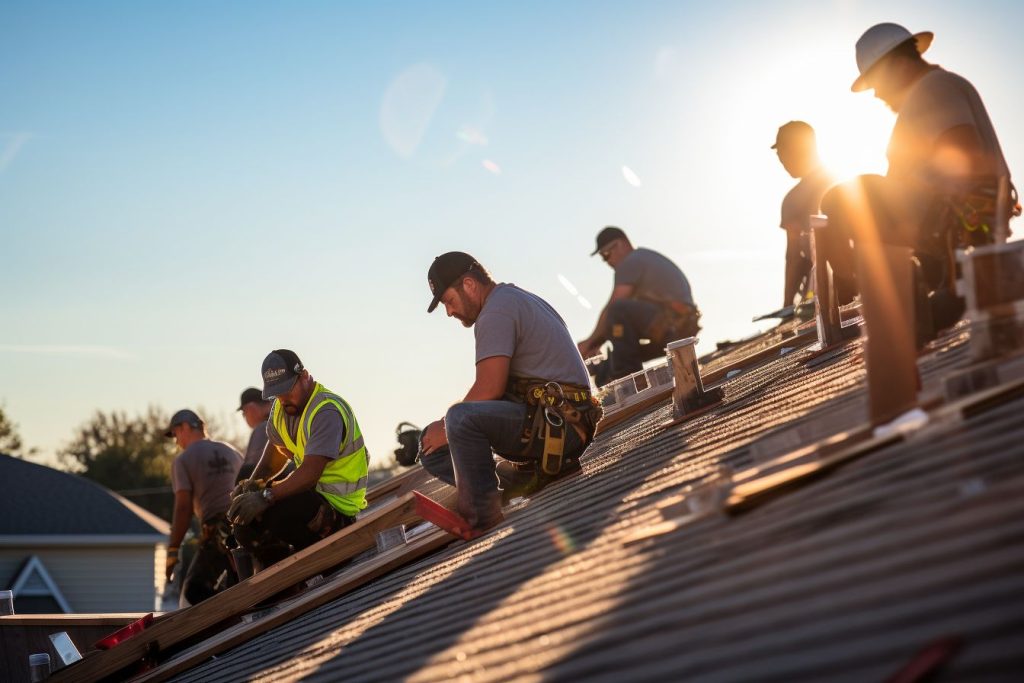Understanding the cost of roof replacement can be challenging, especially when dealing with a leaky or damaged one. Did you know the average replacement cost is around $10,000? This comprehensive guide will break down all you need to know about these costs, from factors influencing the pricing to tips on saving money.
Let’s dive in and learn how to plan your budget for this vital home improvement project!
Key Takeaways
- Factors that influence roof replacement costs include the size of the roof, number of stories, location, type of roofing material, and additional features like skylights or chimneys.
- Understanding the difference between full and partial roof replacements can help homeowners make informed decisions about their roofing needs.
- Additional costs to consider when replacing a roof include removal of the existing roof, underlying structural repairs, cleanup and disposal fees, roof warranty and insurance expenses.
- Homeowners can save on roof replacement costs by choosing cost-effective materials, getting multiple quotes from contractors, scheduling during off-seasons for discounts, considering DIY options for smaller repairs or installations, and adequately maintaining their roofs.
Factors Affecting Roof Replacement Costs
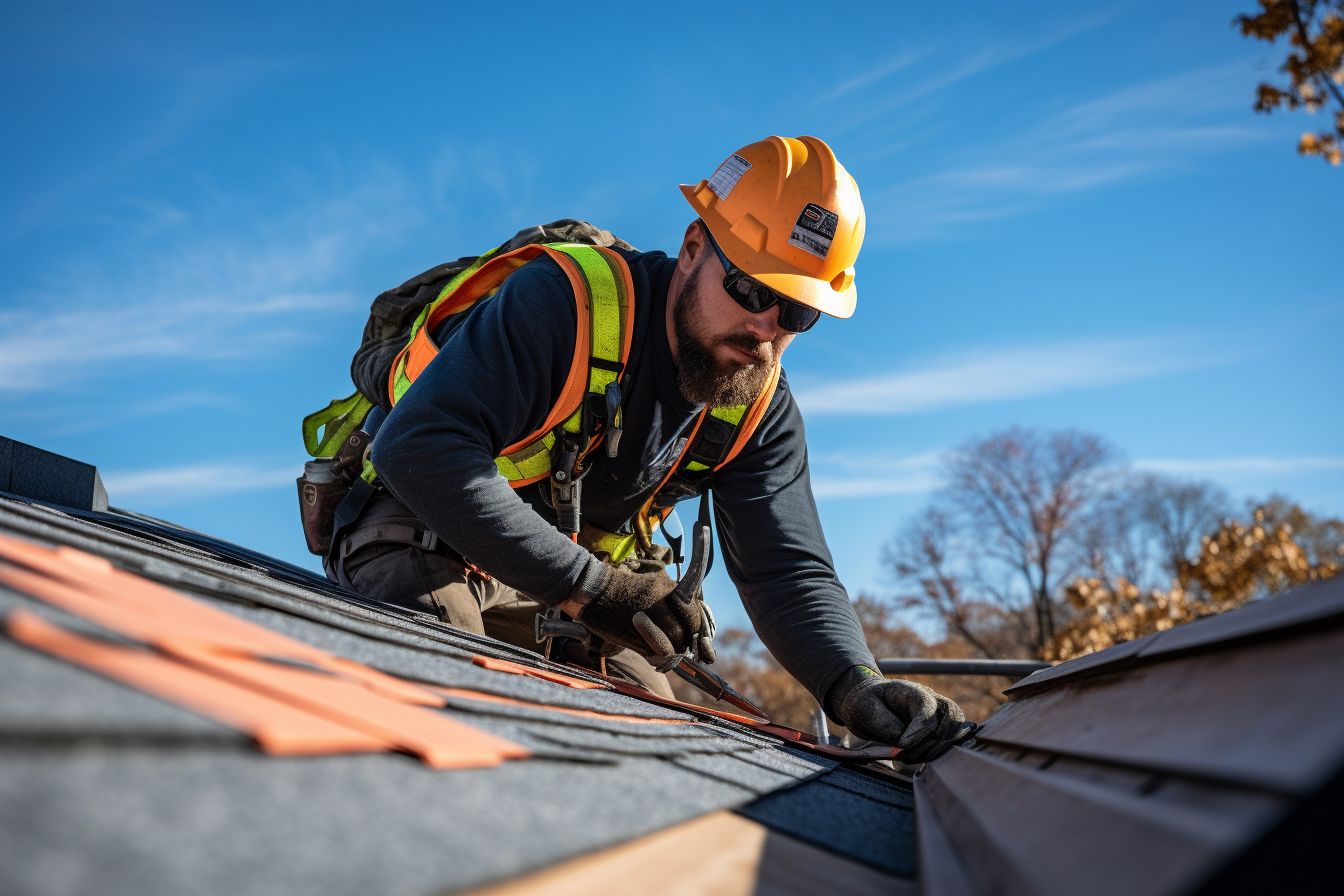
The size of the roof, number of stories, location, type of roofing material, and additional features such as skylights or chimneys all play a role in determining the cost of roof replacement.
Size of the roof
The roof size ranks high among factors impacting the overall roof replacement cost. Larger roofs require more materials and labour, invariably driving up expenses for homeowners.
Professionals calculate roofing surface area in square footage to estimate these costs accurately. Due to increased roof dimensions, homeowners with expansive properties must prepare for a pricier roofing project.
Understanding your home’s roof measurements clarifies potential replacement outlays, making it easier to budget for this significant home improvement task.
Number of stories
The number of stories in a house significantly influences roofing expenses. A single-story home permits easier roof access, reducing labour and time required for removal and installation processes.
Conversely, multi-storied buildings enhance the intricacy of the job, making it more hazardous and time-consuming.
Safety precautions increase with each additional level compared to a single-story building, thus necessitating specialized equipment and expert crew. Consequently, the overall cost increases due to enhanced risk factors associated with working at greater heights.
This complexity becomes an influential factor on roof replacement expenses you shouldn’t ignore while calculating costs.
Location
Geographic location plays a pivotal role in determining roof replacement costs. These costs can fluctuate depending on the local market rates, proximity to suppliers, transportation charges for roofing materials and regional labour charges.
In certain regions where specific types of roofing material are readily available due to abundant resources, expenses may be comparatively lower. Conversely, if materials need to be transported over long distances, it could elevate the overall cost.
Climate factors also directly influence roofing prices as harsher climates demand more durable and pricy materials to withstand extreme weather conditions. Henceforth, understanding these aspects of location becomes crucial while estimating your total roofing expenses.
Type of roofing material
The type of roofing material used directly influences the cost of roof replacement. High-end materials like Metal, DaVinci, and Cedar Shake are more expensive than standard options like asphalt composition shingles.
The choice of roofing material significantly impacts the overall cost, as it can vary dramatically. For example, plastic PVC material costs an average of $550 per roofing square. Considering different roofing options is essential in determining the most suitable and cost-effective solution for your roof replacement needs.
Additional features (skylights, chimneys, etc.)
Skylights, chimneys, and other additional features on your roof can impact the cost of replacing it. These architectural elements and roofing fixtures add complexity to the project, which can increase the overall price.
During a roof replacement, skylights and chimneys may require new flashing, which is necessary for proper waterproofing. The extent of flashing needed can vary depending on factors such as size and quantity, leading to varying costs.
So, when considering a roof replacement, remember that these additional features will contribute to the total expense.
Complete Handbook of Roof Replacement
The Complete Handbook of Roof Replacement is an essential resource for anyone considering a roof replacement project. This comprehensive guide provides valuable information about the various aspects of roof replacement costs.
The book covers topics such as types of roofing materials, different reroofing methods, insulation and ventilation systems for roofs, skylight installation, and even dormer construction.
Additionally, it includes important details about building codes and standards that need to be followed during the roof replacement process. With this handbook, readers can better understand how to read and understand roofing estimates, ensuring they make informed decisions regarding their roof replacement project.
Overall, the Complete Handbook of Roof Replacement is a must-have guide that offers practical advice and insights on all aspects related to roof replacement costs.
Difference Between Full and Partial Roof Replacement
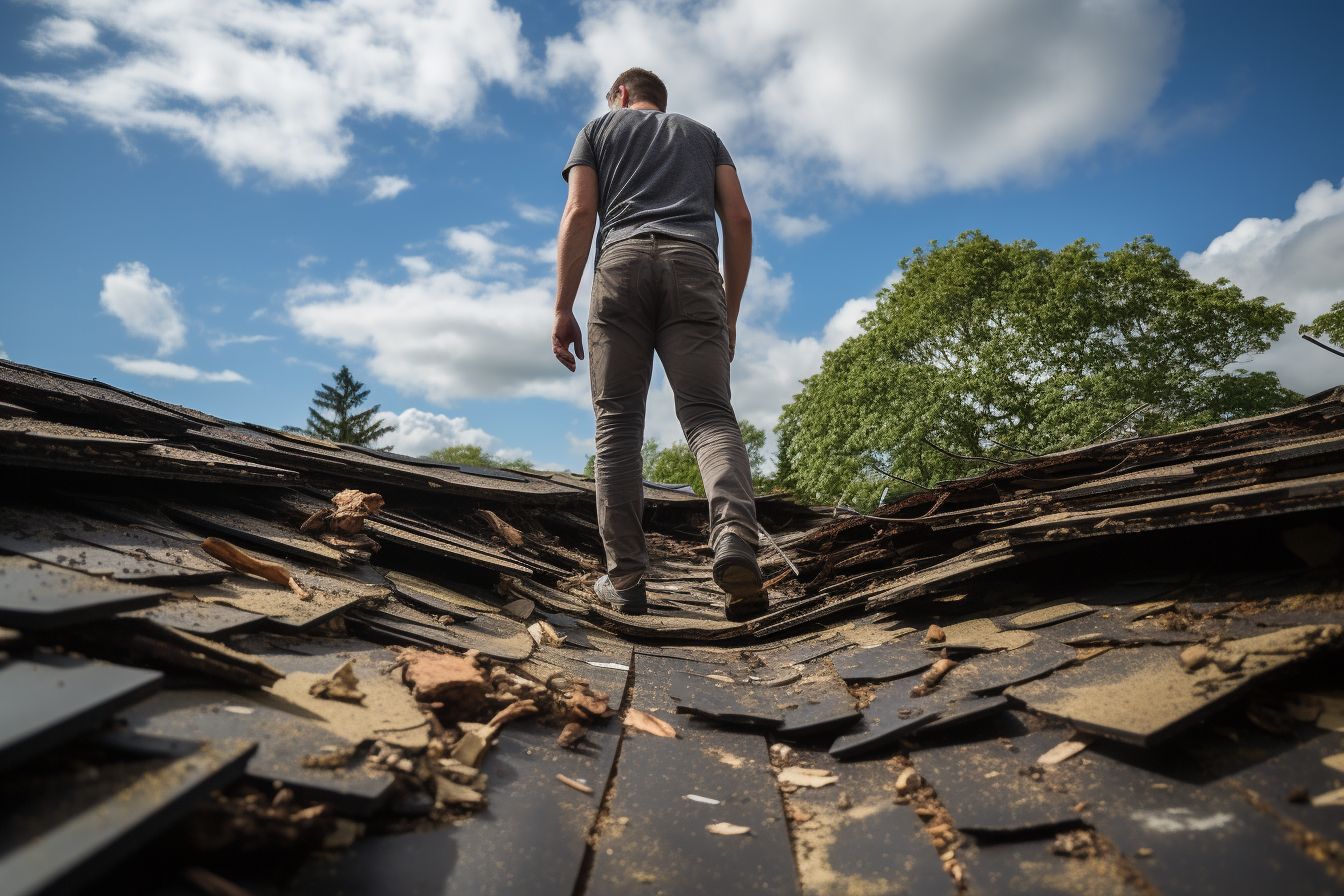
When considering roof replacement options, it’s essential to understand the difference between a full and partial roof replacement. Here are some key distinctions to keep in mind:
- Roof repair: While a full roof replacement involves removing the existing roof and installing a new one, a partial roof replacement focuses on repairing only the damaged sections.
- Damage extent: Full roof replacements are typically chosen when there is extensive damage throughout the roof or if the roof is nearing the end of its lifespan. Partial replacements are suitable when only certain areas of the roof require repair.
- Materials needed: Full replacements require a complete set of materials to cover the entire roof area, while partial replacements may only require materials for specific sections.
- Cost variation: Due to their comprehensive nature, total roof replacements tend to be more expensive than partial replacements. The extent of damage and size of the affected area can also influence cost variations.
Additional Costs to Consider
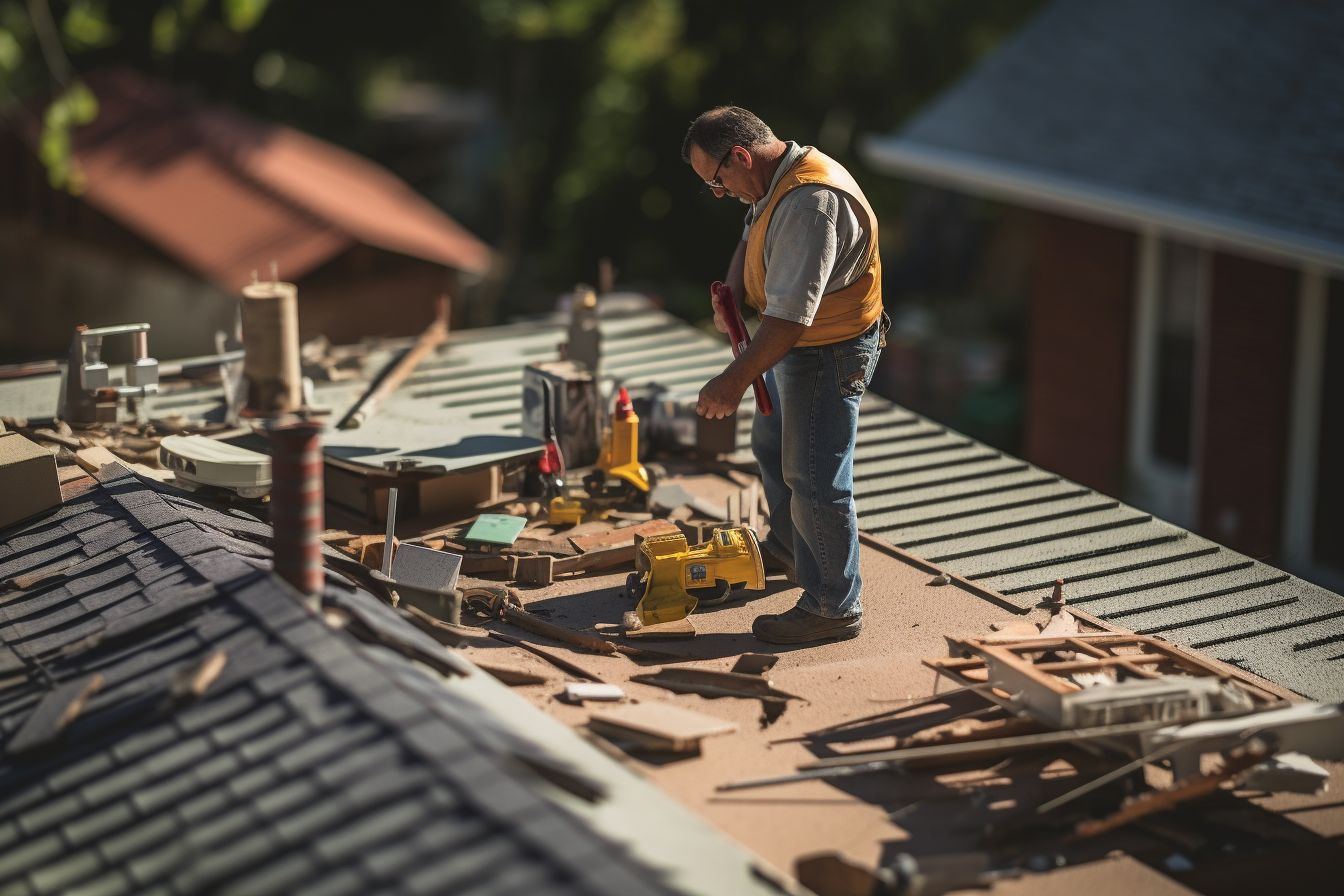
In addition to the basic roof replacement cost, homeowners should consider several additional costs before starting the project. These include removal of the existing roof, underlying structural repairs, cleanup and disposal fees, roof warranty and insurance expenses.
Discover how these factors impact your budget and ensure a smooth roof replacement process.
Removal of the existing roof
Removing the existing roof is an important step in the roof replacement process and is included in the overall cost. On average, it accounts for about 40% of the total expenses. This includes labor costs to remove and dispose of old roofing materials.
By removing the existing roof, contractors can assess any underlying structural repairs needed before installing a new roof. Considering this cost when budgeting for your roofing project is crucial as it directly impacts the total roofing expenses.
Underlying structural repairs
Structural damage is one of the additional costs to consider when replacing a roof. If there are any underlying issues with the structure of your roof, such as rotting wood or weakened supports, these will need to be repaired before the new roof can be installed.
Remember that structural repairs can significantly increase the project’s overall cost. The damage’s extent and the repair work’s complexity will affect how much you’ll need to spend on fixing these underlying issues.
It’s essential to address these repairs promptly to ensure a safe and durable new roof for your home.
When calculating roofing costs, don’t forget about potential underlying structural repairs. These repairs involve fixing any damage or weaknesses in your roof’s supporting structure.
Depending on factors like materials used and the size of your roof, structural repairs can add significant expenses to your budget for a full replacement. Common examples include replacing rotted wood or strengthening weak supports.
Cleanup and disposal fees.
Cleanup and disposal fees are something to remember when replacing your roof. These additional costs may include debris removal, waste disposal, and cleanup charges. Depending on your agreement with the contractor, you may be responsible for these fees, or they may be included in the total cost of the job.
If your project involves removing and disposing of existing roofing materials, there may be added disposal fees as well. When considering a roof replacement, factoring these expenses into your budget is important.
Roof warranty and insurance
Roof warranty and insurance are important considerations when replacing a roof. A roof warranty provides coverage for repairing defects in the roof within the limits of the roof system coverage.
This includes manufacturing defects in the roofing material. On the other hand, homeowners insurance may offer some coverage for your roof, such as actual cash value, replacement cost value, or guaranteed replacement cost.
However, it’s essential to note that homeowners insurance typically does not cover the cost of replacing a roof due to age or normal wear and tear. To learn more about your specific warranty and insurance coverage, refer to your documentation or contact the manufacturer directly.
Ways to Save on Roof Replacement Costs
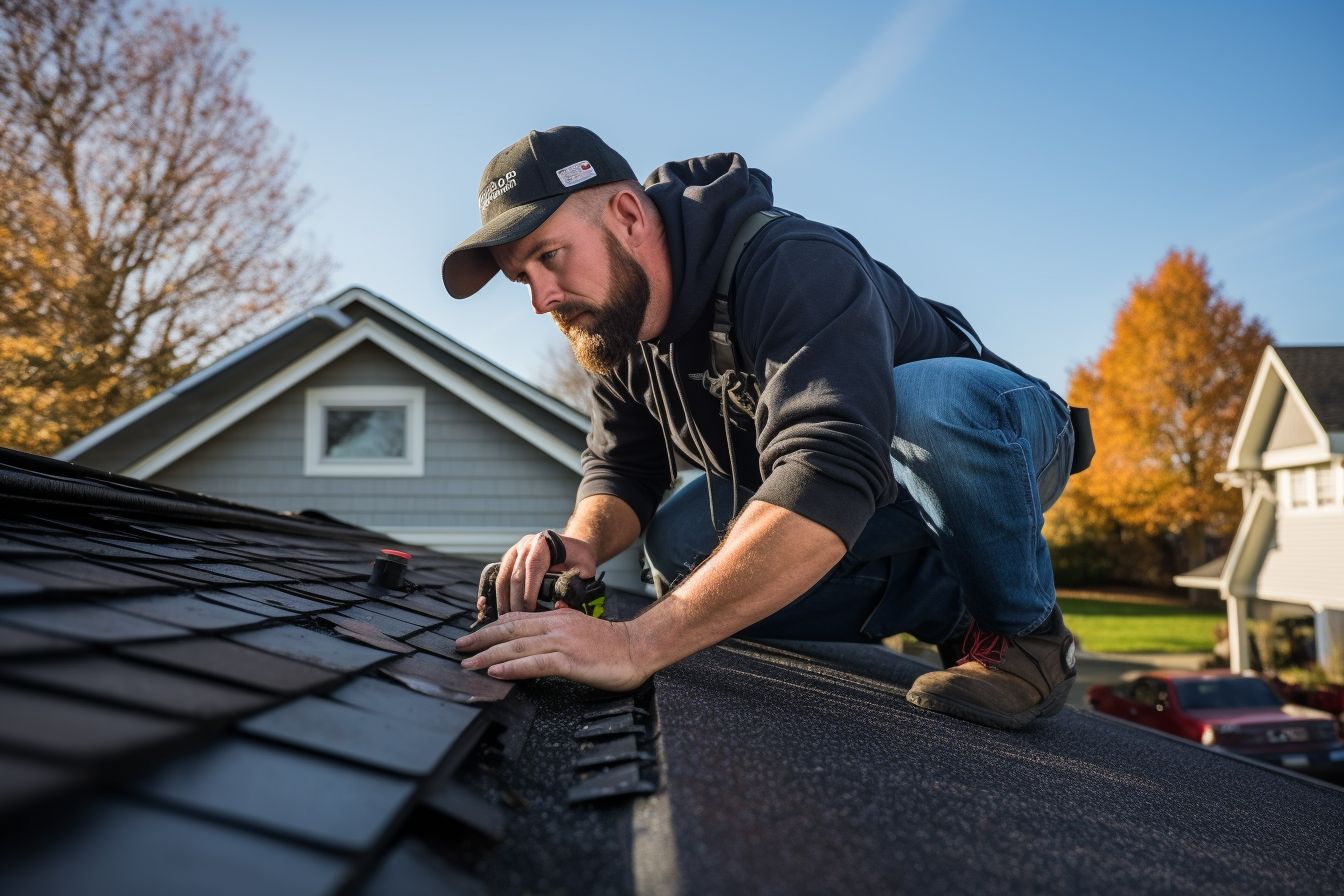
Save on roof replacement costs with these practical tips:
- Choose cost-effective roofing materials such as asphalt shingles or metal roofs.
- Get multiple quotes from reputable contractors to compare prices and services.
- Consider DIY options for smaller repairs or installations.
- Schedule your roof replacement during the off-season when contractors may offer discounts.
- Opt for a partial roof replacement instead of a full one, if feasible.
- Properly maintain your roof to extend its lifespan and avoid costly repairs.
Conclusion
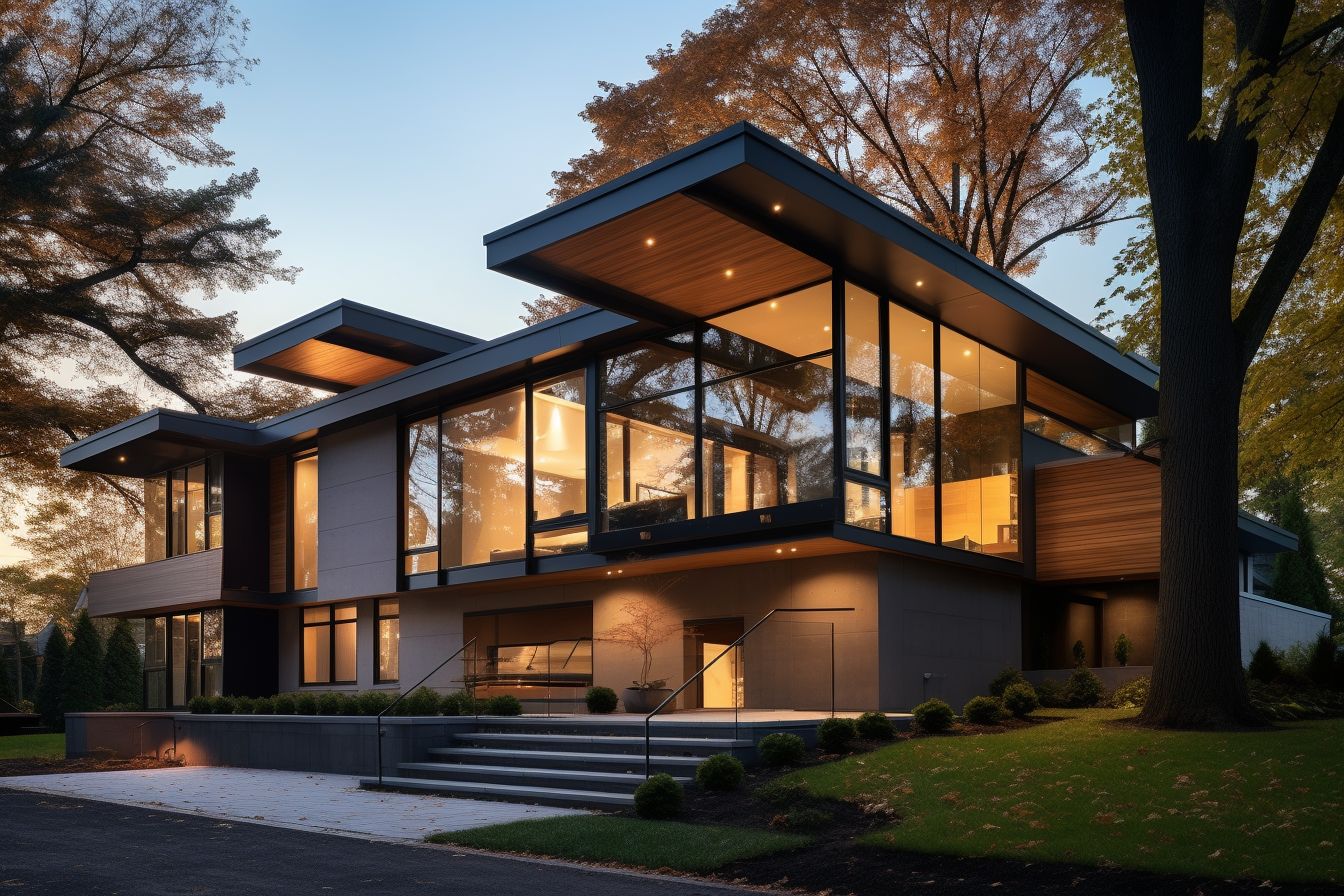
In conclusion, understanding the factors that affect roof replacement costs is essential for homeowners. Factors such as the size of the roof, number of stories, location, and type of roofing material all play a role in determining the overall cost.
By considering these factors and exploring ways to save on costs, homeowners can make informed decisions about their roof replacement projects.
FAQs
1. How do I know if my roof needs to be replaced?
You may need to replace your roof if you notice missing or damaged shingles, leaks in the attic, sagging areas, or excessive wear and tear.
2. What factors determine the cost of a roof replacement?
The cost of a roof replacement depends on various factors, including the size and complexity of the roof, materials used, labour costs in your area, and any additional work required, like removing old layers or repairing structural damage.
3. Is it worth investing in higher-quality roofing materials?
Investing in higher-quality roofing materials can provide long-term benefits such as better durability and resistance to weather conditions. It may also increase the value of your home and potentially lower maintenance costs over time.
4. How long does a typical roof replacement take?
The duration of a roof replacement project varies depending on factors like the size of the roof, weather conditions, and the job’s complexity. However, most projects are completed within 1-2 weeks.
5. Can I save money by replacing a DIY (do-it-yourself) roof?
While it is possible to save money by doing a DIY roof replacement, it is not recommended unless you have experience with roofing installations. Improper installation can lead to costly repairs down the line and may void warranties on materials. It’s best to hire professional roofing contractors for optimal results.

